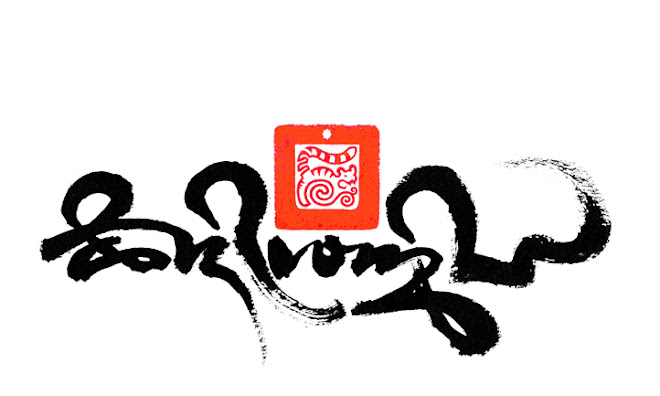
Tsering Tashi (Mannox) above Samye, Tibet, escaping a sand-storm in the great valley below.
What the Six Pāramitās means to a Tibetan Buddhist monk.
The upper sleeveless garment called a Tonga, is additional to the monks robes of south Asia, evolved for warmth in the cold altitude of Tibet. This monks waist coat, besides making a very handy pocket in the crossed fold, is also a symbolic reminder of perfecting the six Pāramitās:
1. Generosity
2. Morality
3. Patience
4. Effort
5. Meditation
6. Wisdom
Each of the perfections is represented by the traditionally organised patches of various different brocades.
These are shown as five sections (repeated twice), easily seen here on the right hand side of the Tonga, the sixth being the larger square on the back.

Front view
Other meanings of the garment are the many pleats on the underarm, which represents the 84 thousand Dharmas.
The blue coloured piping to edging the arm holes is in respect to the blue robes of a Chinese Buddhist order, when one of the Fully precepted Monks was drafted in from China to make up a required number of 10 to continue the ordination tradition.
This was during the time of the Anti-Buddhist King Lang Darma of Tibet, who had killed all the fully ordained monks accept 9.
Another reminder of the fragility of the tradition and of impermanence in general is the red lining of the collar, this represents the gums and jaw of the lord of death, a precarious place for ones head!.

back view
This antique Tonga from Tibet is typical colours and design of the Karma Kagyu order.
The Six Perfections:
listed in the Uchen script style

Calligraphy Tashi Mannox 2009

I like the way you do vowels signs in red. Is that traditional or your own innovation?
ReplyDeleteHi Jayarava,
ReplyDeleteRed vowel signs are traditionally used, especially on the first few words of a paragraph or new text page, more common in the Petsug script style, it is as much a decorative embellishment as to highlight and announce the importance of the words or sentence, examples of this can be found in some old illuminated Tibetan texts, though not that common.
In this particular calligraphy i thought it attractive to carry the red vowel signs throughout to each of the 'perfections' listed, which empowers each of the 'perfections' in their own right.
This is what I like about martial arts because we learn how to control our emotions, specially what you was making reference in here:
ReplyDelete1. Generosity
2. Morality
3. Patience
4. Effort
5. Meditation
6. Wisdom